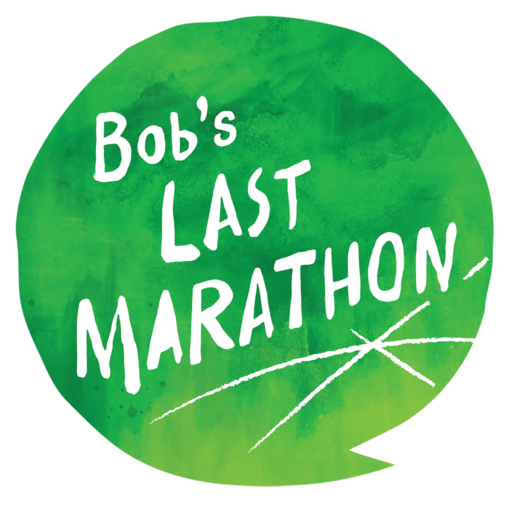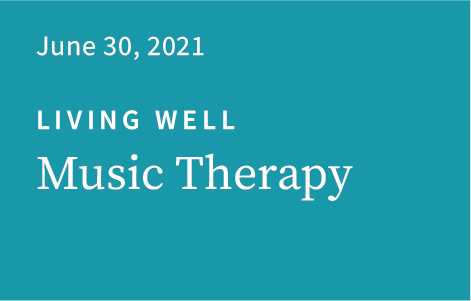Transcript
Music Therapy
When I tell people I’m a music therapist, the first question people ask is, “What is music therapy? What do you do?” There’s a misconception that a music therapist just plays or teaches music. While that can be part of it, our main role is using music as a tool to facilitate therapeutic processes. Our goals overlap those of physical, speech, occupational, and other therapists, and social workers—but using music as the form of therapy. I always say that we use music as the catalyst for healing.
Music is a universal language and, as such, there are few limits to the people it can reach. It can benefit people of all ages with a range of physical and mental capabilities. But it’s especially beneficial to those with Alzheimer’s disease, dementia, and other neurological conditions. This is the population that I work with—over the last few years, I’ve seen music therapy bring people out of their shells, and reawaken their spirit and liveliness. I’ve even had family members tell me they didn’t know their loved ones enjoyed singing, but now they can be heard singing around the house!
Music therapy is grounded in research. Studies about music have shown how it helps facilitate neurogenesis, the regeneration and repair of neurons in the brain. Researchers have also found that music stimulates multiple parts of the brain at the same time, especially the areas affecting the five senses, language, and mood, as well as movement, balance, and gait. Music therapy has been shown to improve a patient’s focus, communication, and memory. It also provides a safe, stimulating environment for socialization.
So you can imagine that music therapy helps us focus on different goals. In my work, though, I use it mainly to target our participants’ cognitive and social skills. And while it benefits people at all stages of Alzheimer’s, music therapy is especially effective in the middle and later stages when the individual becomes more disconnected from their surroundings.
In these later stages of the disease, when speech areas of the brain are often affected, people have more trouble communicating their thoughts. With music therapy the brain responds in conscious and subconscious ways we can’t see. Often the reactions to music are immediate and visceral: The person may light up or show a different emotional affect. It can reawaken a person’s interest in their surroundings and encourage movement. How many times have you found yourself tapping your foot to music or swaying back and forth? This is that subconscious reaction to the musical stimulus. The brain reacts before you even have a say in the matter!
The musical repertoire I select depends on the population and my therapeutic goals. Think back to the music you most connect with—it’s probably songs you loved as a late teenager or young adult. According to research, the music you listened to from 18 to 25 promotes the most positive response. Since participants at our day care center are mostly geriatric, I draw from a playlist ranging from the 1920s all the way to the 1960s. Of course some folks prefer newer music, and some connect with music from their parents’ era. We’ve had people in their 40s and then some in their early 100s, so that is a big span of time to choose from.
I choose the genre and tempo of music to meet my goals for that session or individual. For example, if someone is feeling stressed, anxious, or overwhelmed, I select sedating or calming music. On the other hand, to promote movement and exercise, I select an upbeat, stimulating song with a quicker tempo and strong percussion. A nice steady beat with prominent bass can help with gait training and balance.
At our day care center, I schedule morning and afternoon music groups, with smaller sessions in between.
The morning music groups focus more on movement and getting bodies and minds awake and alert. We pass out rhythm instruments and I lead participants in movements to a song, where I try to address all areas of the body. I start with the arms by playing the instruments in all directions, asking them to mirror me. I encourage foot-tapping and lower body movement with sit-down marching. I employ drum circles to get the arms moving, which also often turns into a cathartic, energy-filled experience.
The music therapy group in the afternoon focuses on a musical game or sing-along. I like using games like “Name that Tune” or “Guess the Musician.” This works really well for stimulating memory and is fantastic for getting participants to start reminiscing—often prompting people to recount a story about times listening to the song in the past.
The sing-alongs may seem more straightforward, but I weave in therapeutic techniques to encourage participation, like having them sing verses back to me, echoing lyrics I sing, creating a musical round, or shouting specific lyrics. Under the guise of musical performance, I’m actually engaging many different parts of the brain.
Between the large morning and afternoon group sessions, I hold smaller songwriting and music appreciation groups, geared toward early- and early-middle-stage individuals. Our songwriting group is wonderfully creative. We rewrite lyrics to well-known melodies using our own narrative. Recently, we rewrote Sinatra’s “Fly Me to the Moon” to become “Just Give Me a Spoon,” about our love for ice cream. This fun, simple game helps accomplish three important goals: It engages the brain in a more cerebral way, helps boost self-esteem, and reduces depression and anxiety.
Since COVID-19 broke out, our entire program has become virtual. It has taken some tweaking, but it finally resembles the format of our in-person program. Despite the fact that it’s not in person, I still see how beneficial our program is to our participants, their families, and their caregivers. I still see all the smiling faces when we break into song, and I still get to crack jokes with our participants. Plus, the caregivers still need respite, especially in these times when we are more confined to the house.
One of the beautiful things about music therapy is that it doesn’t always feel like therapy. It can be presented as a fun drum circle or musical game while therapeutic techniques are cleverly woven in. Our sessions are meant to be fun and engaging without the need for explanation. Music therapists are really blessed in that our tools are inherently enjoyable. We don’t have to force our therapy because most everyone already loves music. It’s one of the great natural motivators.
Through my time serving people at our day care center, I’ve been fortunate enough to see the difference that we can make. It reminds me that not only is this beneficial to our participants, but also to me. I’m grateful that I can make a difference while also learning and growing with these individuals. It makes me proud to say that I am a music therapist.
Kristopher Hong, MT-BC, NMT
Program Coordinator/Music Therapist
Peninsula Volunteers Inc.
Rosener House Adult Day Services

